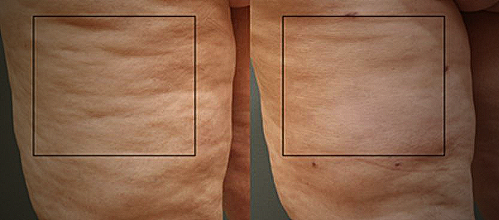Cellulite is a common concern for many women, but have you ever wondered why men don’t seem to have it? In this article, we explore the science behind why men don’t get cellulite and what factors contribute to this gender difference.
According to aestheticmed.co.uk, men have less subcutaneous fat than women, which makes cellulite less likely to develop in their bodies. Additionally, men tend to have stronger connective tissue than women, which further decreases the risk of cellulite.
These physiological differences between the genders explain why it is uncommon for men to develop cellulite. An article on medicalnewstoday.com also supports this, stating that men have a thicker dermis layer than women, which also contributes to the lack of cellulite in their bodies.
Check out this Youtube video: “Why do women have cellulite while men don’t?” To finally get the answer to this age-old question that has been bugging us for ages.
The Science of Cellulite
Cellulite is a condition characterized by dimpled, lumpy skin that usually appears on the thighs, hips, buttocks, and abdomen. Although it is more common in women, men can also develop cellulite.
However, men are less likely to develop it due to the differences in connective tissue and fat cell distribution. Men have a criss-cross tissue structure that makes it difficult for fat cells to protrude into the skin layer, unlike the vertical arrangement of fat cells and connective tissue in women.
Additionally, hormones and genetics also play a role in the development of cellulite, with estrogen being a key factor in women. Lifestyle habits such as poor diet and lack of exercise can also contribute to cellulite formation.
Despite these factors, men can still develop cellulite, but it is less common compared to women.
Why Don’t Men Get Cellulite?
Men don’t typically get cellulite because they have stronger connective tissue and less subcutaneous fat compared to women. This was also supported by a study that looked at the specific processes in women’s skin that lead to cellulite development.
While both men and women have fat cells and connective tissue, the structure and distribution of these components are different between the sexes. The connective tissue in men’s skin is arranged in a crisscross pattern, while women’s connective tissue forms a vertical pattern that can allow fat cells to bulge and create cellulite.
Additionally, men tend to store fat in different areas of their body, such as the abdomen, while women store more fat in their hips and thighs, which can contribute to cellulite development.

The Role of Testosterone
Men have lower levels of estrogen and higher levels of testosterone than women, which affects fat distribution in the body. The elevated presence of testosterone in men stimulates protein production, resulting in a thicker layer of connective tissue and skin.
This unique feature makes it more difficult for the stored fat to protrude through the skin, effectively masking its appearance. Therefore, men are less likely to develop cellulite than women.
Can Men Get Cellulite?
According to www.lipotherapeia.com, men can develop cellulite But it is less common due to their robust connective tissue and lower subcutaneous fat levels. However, factors such as poor diet, lack of exercise, hormonal imbalances, and genetics can contribute to cellulite formation in men.
To prevent or minimize its appearance, men can maintain a healthy lifestyle through regular exercise, a balanced diet, and avoiding smoking and excessive alcohol consumption.
Myths and Misconceptions
Contrary to popular belief, cellulite isn’t exclusively a woman’s issue. Men can also develop cellulite, but it is much less common due to differences in the structure of fat and muscle between genders.
Cellulite appears when fat pushes through connective tissue, causing a dimpled appearance on the skin. Women tend to have thinner connective tissue and more body fat, making them more prone to cellulite.
While men have thicker connective tissue and less body fat, reducing their risk of developing cellulite. Additionally, genetics, hormones, and lifestyle factors can also contribute to the development of cellulite in both men and women.
Therefore, it is important to understand that anyone can develop cellulite and that gender is not the only determinant factor.
Conclusion
Despite the prevalence of cellulite among women, men do not typically develop it due to differences in their connective tissue and fat distribution. Men’s connective tissue is arranged differently, forming a criss-cross pattern that prevents the formation of fat pockets that cause cellulite.
Additionally, men tend to store fat in a more diffuse pattern, rather than in distinct pockets that contribute to cellulite formation. While weight loss and targeted exercise can help reduce the appearance of cellulite in women, these methods may not be effective for men due to the underlying differences in their physiology.
However, it is important to note that while men may not be as prone to cellulite, they can still develop it. Factors such as hormonal imbalances, weight gain, and genetics can all contribute to the formation of cellulite in men.
In order to maintain healthy skin and reduce the risk of developing cellulite, men should focus on maintaining a healthy diet, staying active, and using skincare products specifically designed for their skin type.
Overall, the science behind why men don’t typically get cellulite is complex and multifaceted, and there is no one-size-fits-all explanation. By understanding the differences in connective tissue and fat distribution between men and women, we can better understand why men are less prone to cellulite formation.
While there are still many unanswered questions, continued research in this area can help us develop more effective treatments and preventive measures for both men and women who struggle with cellulite.
